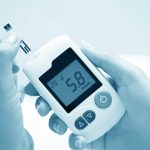Introduction
In vitro diagnostic (IVD) devices are essential component of modern healthcare, for diagnosing and monitoring wide range of diseases, treatments and conditions. Establishing robust clinical evidence for IVD devices is critical for ensuring their safety, efficacy, and reliability.EU Regulation 2017/746, known as the In Vitro Diagnostic Regulation (IVDR), governs the manufacture, marketing, and use of in vitro diagnostic medical devices (IVDs).
The regulation replaces the previous IVD Directive (98/79/EC) and introduces several changes and updates to the previous regulatory framework. One of the key changes introduced by the IVDR is the requirement for IVD performance evaluation. Under the regulation, all IVDs must undergo performance evaluation prior to being placed on the market. The performance evaluation is a systematic process that assesses the analytical and clinical performance of the IVD, including its sensitivity, specificity, safety, accuracy, precision, and clinical validity. The performance evaluation must be conducted in accordance with the requirements of the IVDR and using appropriate scientific methods and statistical analyses.
The results of the performance evaluation must be documented in a performance evaluation report, which must be included in the technical documentation for IVDs.
The performance evaluation is an important aspect of the IVDR, as it ensures that IVDs are safe and effective for their intended use. It also helps to ensure that IVDs meet the requirements of the regulation and are fit for purpose.
Objective
However, the main purpose of performance evaluation is to demonstrate that the IVD in question achieves its intended purpose and is both safe and effective and to improve the safety and efficacy of in vitro diagnostic medical devices available in the EU market.
Methodology
IVDR defines Performance Evaluation as “an assessment and analysis of data to establish or verify the scientific validity, the analytical and, where applicable, the clinical performance of a device.” The regulation goes on to state that PE is a continuous process that must be carried out throughout the life cycle of the device.
Performance evaluation involves combination of several components.
- Scientific validity
- Analytical performance
- Clinical performance
- Scientific peer-reviewed literature
Scientific Validity
IVDR defines scientific validity as “association of an analyte with a clinical condition or physiological state.”For well-established assays, the description of clinical guidelines or published literature suffices, whereas for newly developed assays, where published evidence is limited, the manufacturer needs to provide their own evidence for scientific validity such as proof-of-concept studies or clinical performance studies.
The literature or data are summarized in scientific validity report (SVR) as it pertains to specific claims stated by the manufacturer for intended purpose of the device.
Analytical Performance
Analytical performance refers to how well IVD measures or detects the analyte. To evaluate the analytical performance of IVDs, bench studies like cross-reactivity, interference, and stability testing are carried out.
In vitro diagnostic instruments for professional use, does provide some guidance on performance characteristics that are described in labelling for instruments. Testing for compliance with common technical specifications (known as common specifications once published as implementing act for IVDR) for devices are documented under analytical performance and clinical performance, as appropriate.
Clinical Performance
IVDR defines clinical performance as “the ability of a device to yield results that are correlated with particular clinical condition or physiological or pathological process or state in accordance with target population and intended user.” In other words, clinical performance measuresdiagnostic accuracy of the device. Clinical performance study to proves this, and literature is used as supporting evidence.
Clinical performance studies are required for the device, for deep understanding of the intended purpose and clinical use. For devices measuring analyte that are associated with a clinical condition that have medical decision points, clinical performance data and corresponding Clinical Performance Report (CPR) are required.
Scientific Peer-Reviewed Literature
Scientific peer-reviewed literature demonstrates clinical performance of the device, and the earlier section of the Regulation on scientific validity (Annex XIII 1.2) describes the requirement for documenting the literature search methodology, protocol and report of literature review conducted to support performance evaluation.
The protocol describes the background, objective and methods for identification, selection and collection of relevant publications to address the literature review questions. Appropriate databases should be selected pertinent to the intended purpose of device such as PubMed, Cochrane Library, Embase, Google Scholar etc.
It is recommended that manufacturers establish clear, methodical and justified procedure for conducting any literature search to maintain unbiased reproducibility of results. Appraisal of the literature are documented in CPR, making clear the weighting of each publication to support clinical evidence. Data from literature are used to support safety and performance claims for the device.
Performance Evaluation Report (PER)
The PER is where all the clinical evidence including your scientific validity report, analytical performance report, and clinical performance report will be documented.
PER requirements:
The Performance Evaluation Report must include:
- Justification for the approach to gather clinical evidence
- The literature search methodology, protocol, and report
- The technology behind the device, its intended purpose, and any claims about performance or safety
- The nature and extent of scientific validity and analytical and clinical performance data
- A comparison of clinical evidence with the State of the Art
- Any updates from PMPF Evaluation Reports
Any special characteristics of the device such as near-patient, self-test or specific clinical claims outlined in the intended purpose are addressed in CPR. PEP describes the requirement of clinical performance data required to support safety, risk or performance. Manufacturers are encouraged to use additional post-market surveillance (PMS) data or comparator product information to support the argument that the device is safe and effective.
If you need help with IVDR Performance Evaluation for your device on the market, reach out to MakroCare for expert assistance.


